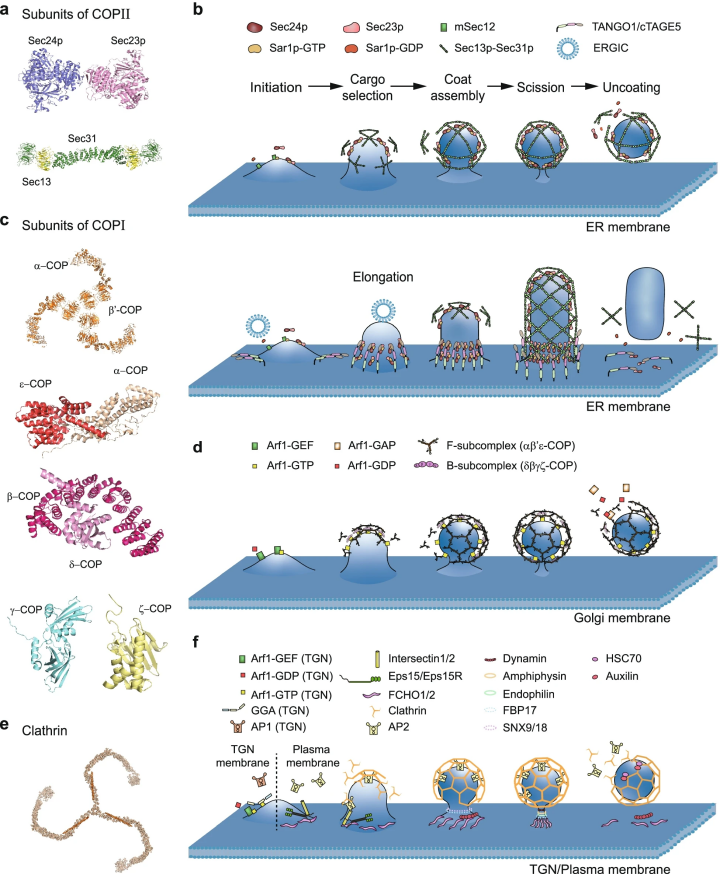Molecular Biomedicine | Vesicle trafficking and vesicle fusion: mechanisms, biological functions, and their implications for potential disease therapy

Open the phone and scan

The coat protein mediated vesicle formation
Intracellular vesicle trafficking is the fundamental process to maintain the homeostasis of membrane-enclosed organelles in eukaryotic cells. These organelles transport cargo from the donor membrane to the target membrane through the cargo containing vesicles. Vesicle trafficking pathway includes vesicle formation from the donor membrane, vesicle transport, and vesicle fusion with the target membrane. Coat protein mediated vesicle formation is a delicate membrane budding process for cargo molecules selection and package into vesicle carriers. Vesicle transport is a dynamic and specific process for the cargo containing vesicles translocation from the donor membrane to the target membrane. This process requires a group of conserved proteins such as Rab GTPases, motor adaptors, and motor proteins to ensure vesicle transport along cytoskeletal track. Soluble N-ethyl-maleimide-sensitive factor (NSF) attachment protein receptors (SNARE)-mediated vesicle fusion is the final process for vesicle unloading the cargo molecules at the target membrane. To ensure vesicle fusion occurring at a defined position and time pattern in eukaryotic cell, multiple fusogenic proteins, such as synaptotagmin (Syt), complexin (Cpx), Munc13, Munc18 and other tethering factors, cooperate together to precisely regulate the process of vesicle fusion. Dysfunctions of the fusogenic proteins in SNARE-mediated vesicle fusion are closely related to many diseases. Recent studies have suggested that stimulated membrane fusion can be manipulated pharmacologically via disruption the interface between the SNARE complex and Ca2+ sensor protein. Here, we summarize recent insights into the molecular mechanisms of vesicle trafficking, and implications for the development of new therapeutics based on the manipulation of vesicle fusion.
Article Access: https://doi.org/10.1186/s43556-022-00090-3
More about Molecular Biomedicine: https://www.springer.com/journal/43556
Looking forward to your contributions.


